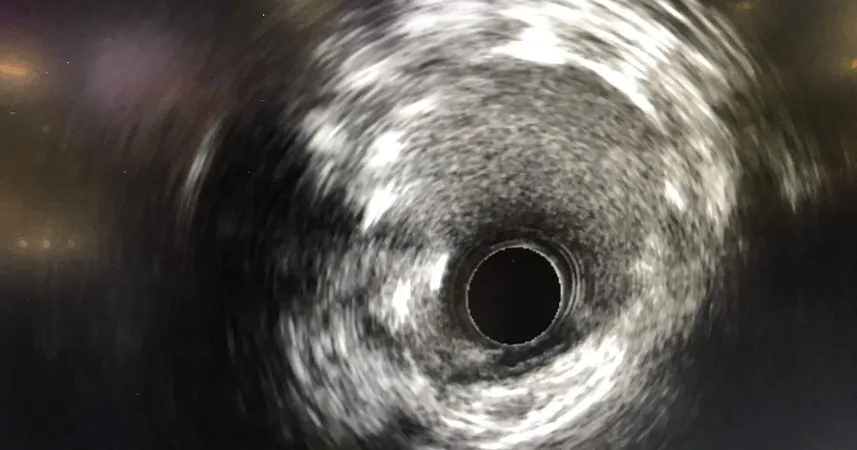
Revolutionary Intravascular Imaging Technology Significantly Lowers Risks for Diabetic Patients Undergoing PCI!
2024-11-20
Author: Wei
Groundbreaking Study in JACC: Cardiovascular Interventions
In a groundbreaking study published in JACC: Cardiovascular Interventions, researchers have found that using intravascular imaging to guide percutaneous coronary intervention (PCI) procedures offers substantial benefits for patients with diabetes who are experiencing acute coronary syndromes (ACS). This innovative approach could change the outcomes for thousands of high-risk patients.
Comments from Study Author
First author Dr. Xiaofei Gao, a cardiologist from Nanjing First Hospital in China, explains, “Traditional angiography has inherent limitations in evaluating lesion measurements and ensuring optimal stent expansion. Intravascular imaging technology can overcome these hurdles.” The study illustrates that IVUS-guided PCI substantially lowers the incidence of ischemic events compared to its traditional counterpart.
Research Methodology
The research involved tracking a cohort of over 1,100 patients with diabetes and ACS across multiple countries, including China, Italy, Pakistan, and the United Kingdom, from August 2019 to October 2022. The average age of participants was 62, with a predominance of men (68.4%).
Findings of the Study
Half of the study group received PCI guided by intravascular ultrasound (IVUS), while the remainder underwent standard angiography-guided PCI. The results were striking: only 3.6% of the IVUS group experienced target vessel failure (TVF)—a critical measure encompassing cardiac mortality, target vessel myocardial infarction, and clinically driven target vessel revascularization—compared to 8.3% in the angiography group.
The key difference lies in clinically driven target vessel revascularization rates: just 0.9% in the IVUS group versus 3.8% in those guided by traditional imaging techniques. Additionally, the all-cause mortality rate was significantly lower for patients in the IVUS group (0.7%) compared to the angiography group (2.4%), although it is important to note that the study wasn't primarily designed to analyze mortality outcomes.
Safety and Complications
Interestingly, the rates of stent thrombosis and major bleeding were similar between the two groups, suggesting that the improved outcomes do not come with increased risk of complications.
Need for Further Research
Dr. Gao and his team underscored the pressing need to explore the advantages of IVUS guidance for patients who are significantly vulnerable due to both ACS and diabetes. They emphasize the intricate relationship between these two conditions, noting how they exacerbate inflammatory and metabolic processes, heightening the risk of adverse cardiovascular incidents.
Implications for Future Treatment
This study paves the way for further investigations into optimized treatment approaches for diabetic patients, who face numerous challenges in managing heart-related conditions. It may very well revolutionize how healthcare providers approach PCI in high-risk populations, providing both hope and healthier outcomes.
Get ready for a future where heart interventions for diabetic patients could become safer and more effective than ever!

 Brasil (PT)
Brasil (PT)
 Canada (EN)
Canada (EN)
 Chile (ES)
Chile (ES)
 Česko (CS)
Česko (CS)
 대한민국 (KO)
대한민국 (KO)
 España (ES)
España (ES)
 France (FR)
France (FR)
 Hong Kong (EN)
Hong Kong (EN)
 Italia (IT)
Italia (IT)
 日本 (JA)
日本 (JA)
 Magyarország (HU)
Magyarország (HU)
 Norge (NO)
Norge (NO)
 Polska (PL)
Polska (PL)
 Schweiz (DE)
Schweiz (DE)
 Singapore (EN)
Singapore (EN)
 Sverige (SV)
Sverige (SV)
 Suomi (FI)
Suomi (FI)
 Türkiye (TR)
Türkiye (TR)
 الإمارات العربية المتحدة (AR)
الإمارات العربية المتحدة (AR)